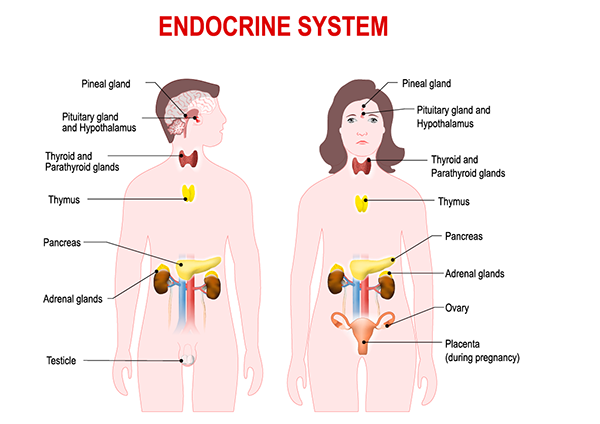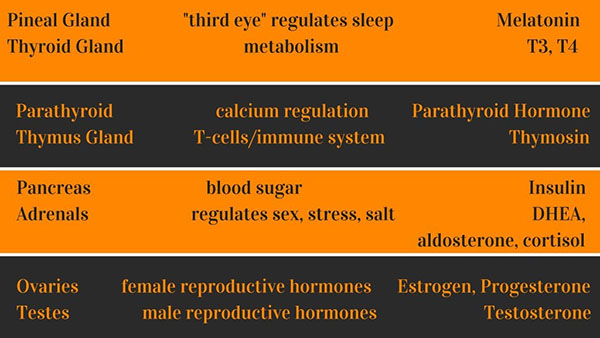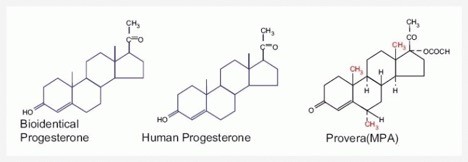The Balancing Hormones Naturally blog is meant to break down the essentials of the endocrine system and how it functions.
It is purposefully written in bullet point format to make it as basic as possible and so that it can be used as a reference. This blog is meant to breakdown the essentials of the endocrine system and how it functions. It is purposefully written in bullet point format to make it as basic as possible and so that it can be used as a reference.

This is a basic picture of the endocrine system and all the different organs that are involved in signaling hormones. All of these organs receive signals from the brain and also communicate to the brain in a feedback system.
In a nutshell, the hypothalamus (in the brain) regulates the Pituitary Gland (in the brain) to the Endocrine Organs (thyroid, thymus, adrenals, testes, ovaries, pancreas)
The Endocrine System is the system that is responsible for regulating hormones. These chemical messengers have various effects on the body.
Here is a list of the endocrine glands, what they do, and the hormones that they release.

Hormones are the body’s chemical messengers. They communicate important messages within the body and give feedback to the brain.
Here are the different functions of hormones:
The main sex hormones have different functions in the body. Here is a breakdown of those hormones.
| Estrogen |
There are three estrogens: Estrone (E1), Estriol (E3), Estradiol (E2) Proliferative Hormone (cell-growing) Female sex characteristics |
|---|---|
| Progesterone |
Balances out estrogen Anti-estrogen Relaxing |
| Testosterone | Anabolic (building) hormone Male sex characteristics |
| DHEA |
Precursor to other hormones (especially testosterone) Essential for energy production and blood sugar balance Consider an anti-aging hormone |
| Cortisol |
Energy production, blood sugar metabolism, anti-inflammatory and stress response Highest in the am and drops during the day Manages long-term stress |
Too much estrogen or too little estrogen in relation to progesterone. We can measure this through a progesterone to estrogen ratio (Pg/E2 ratio). This can happen either because your estrogen is high due to foreign estrogen exposure and improper estrogen breakdown or because your progesterone levels are low.
Can cause: fibrocystic breasts, foggy thinking, migraines, bone/mineral loss, ovarian cysts, water retention, low thyroid symptoms, heavy/irregular menses, belly weight gain, tearfulness
Here is a picture of the difference in chemical makeup of HRT (Provera) to bioidentical and human progesterone:


The majority of hormones exist in two forms:
Only the free hormones are biologically active and available to the receptors in the body. Protein-bound hormones do not fit the receptors and are considered non-bioavailable.
Urine hormones also portray a good picture of free hormone levels over bound. This is the testing that is warranted if someone is on topical hormones.
